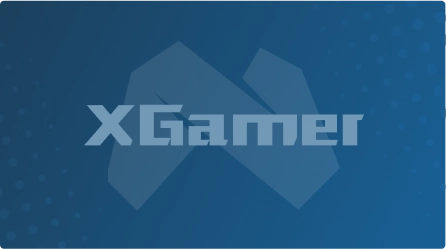
Mortal Kombat: Legacy Kollection Review - Chronicled Kombat
Reviewed on:
PlayStation 5
Platform:
PlayStation 5, Xbox Series X/S, Switch 2, PlayStation 4, Switch, PC
Publisher:
Atari
Developer:
Digital Eclipse
Rating:
Mature
As video game franchises go, few have a more fascinating history than Mortal Kombat. Emerging from a ragtag team at an arcade-first developer, the blood-soaked fighter quickly became a phenomenon that rivaled one of its chief inspirations, Street Fighter, before being embroiled in controversy that reached the U.S. Senate. Digital Eclipse, a studio that has emerged as the preeminent compilation team, delivers an incredible collection of early-era Mortal Kombat titles along with a documentary that appropriately examines the creation and impact of the series. Throwing uppercuts and ripping spines in the classic MK games never gets old, and is even better thanks to faithful emulation and various quality-of-life options. Features such as difficulty options, Fatality training modes, unlimited time to execute Fatalities, on-screen move lists, screen filters, and different secret unlocks make this the best official way to enjoy these games today. Various arcade, handheld, and console versions of Mortal Kombat 1, 2, and 3 are the headliners (plus my favorite from childhood, Mortal Kombat Trilogy on PS1), but coming into this, I was more intrigued by the deep cuts. I relished being able to relive the first game in the franchise I ever owned, Mortal Kombat on Game Gear, or check out the rare WaveNet version of Ultimate Mortal Kombat 3, but I mostly couldn’t wait to dive into the black sheep of the franchise. Mortal Kombat 4, Mythologies: Sub-Zero, and Special Forces are notorious for being difficult, clunky, and often downright bad, and as a result, they’ve largely been lost to time. Legacy Kollection finally brings them forward so you can see for yourself if they are as bad as their reputations would have you believe. In my experience, they largely are that bad, but thanks to rewind functionality, I loved actually being able to make progress through the brutally difficult and poor-controlling Mythologies. Mortal Kombat 4 is also a nice inclusion as the advent of 3D Mortal Kombat games, particularly with an increased rendering mode, but I would have liked to have the added historical context of where the series went from there. Sadly, the Deadly Alliance Trilogy is missing outside of the Game Boy Advance version. Unfortunately, the online functionality as of this writing is as barebones as someone who just got roasted by Scorpion’s Fatality. At launch, you can only play online through quick matches, meaning there are no private lobbies and no way to play with friends. Digital Eclipse has outlined those features for its post-launch roadmap, but for a compilation of fighting games, the online suite is incomplete at release. Digital Eclipse touts rollback netcode for the best possible experience, but I was unable to connect to a match with a coworker, even though we entered matchmaking at the same time with the broadest settings possible. Being able to play the 23 games included in this collection is the main draw for many, but I always look forward to Digital Eclipse’s interactive documentaries. Sitting through a ton of videos, including interviews, commentary, and archival footage, I was enraptured. Watching series co-creators Ed Boon and John Tobias, along with other key figures like John Vogel, Dan Forden, Eugene Jarvis, and more, walk through the creation and development of the original game through the modern era is enthralling and fascinating. Being able to watch behind-the-scenes footage of Boon coming up with Scorpion’s iconic spear attack in real time or seeing Tobias’ original sketches is an utter treat. Mortal Kombat is a series with a rich history that permeates pop culture in myriad ways, and Digital Eclipse, alongside NetherRealm Studios, does an exemplary job of capturing the early days of the phenomenon. The level of care with which Digital Eclipse creates its compilations is unrivaled. Though the online suite is incomplete at launch, each game plays exceptionally well and offers a plethora of options to tweak the classic experiences to your liking. Getting excellent versions of these games in one cohesive package is great, but the true highlight is the in-depth interactive documentary and all the fun relics that exist therein. Mortal Kombat: Legacy Kollection is not only the best way to play these games in 2025, but it’s also the best way to peek behind the curtain and witness the creation of a modern-day icon.
Score:
8.75
About Game Informer's review system
 Popular Content
Popular Content Explore Topic
Explore Topic



